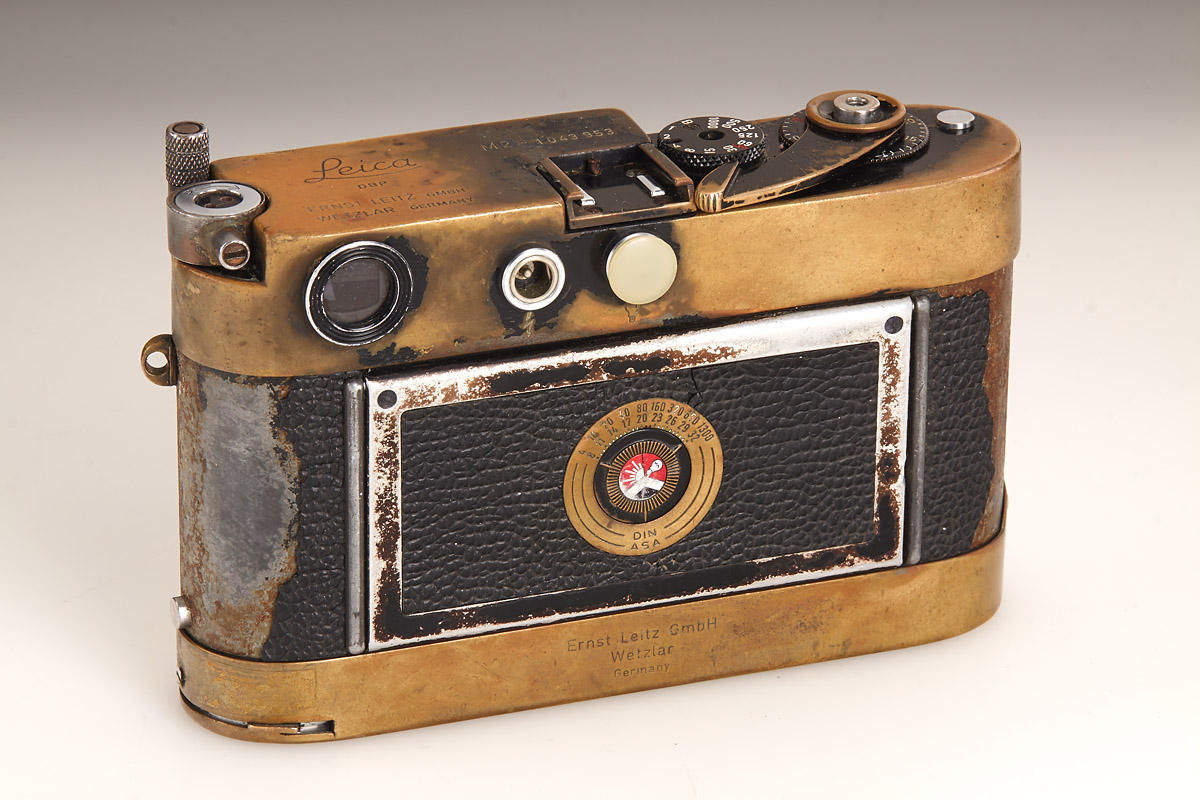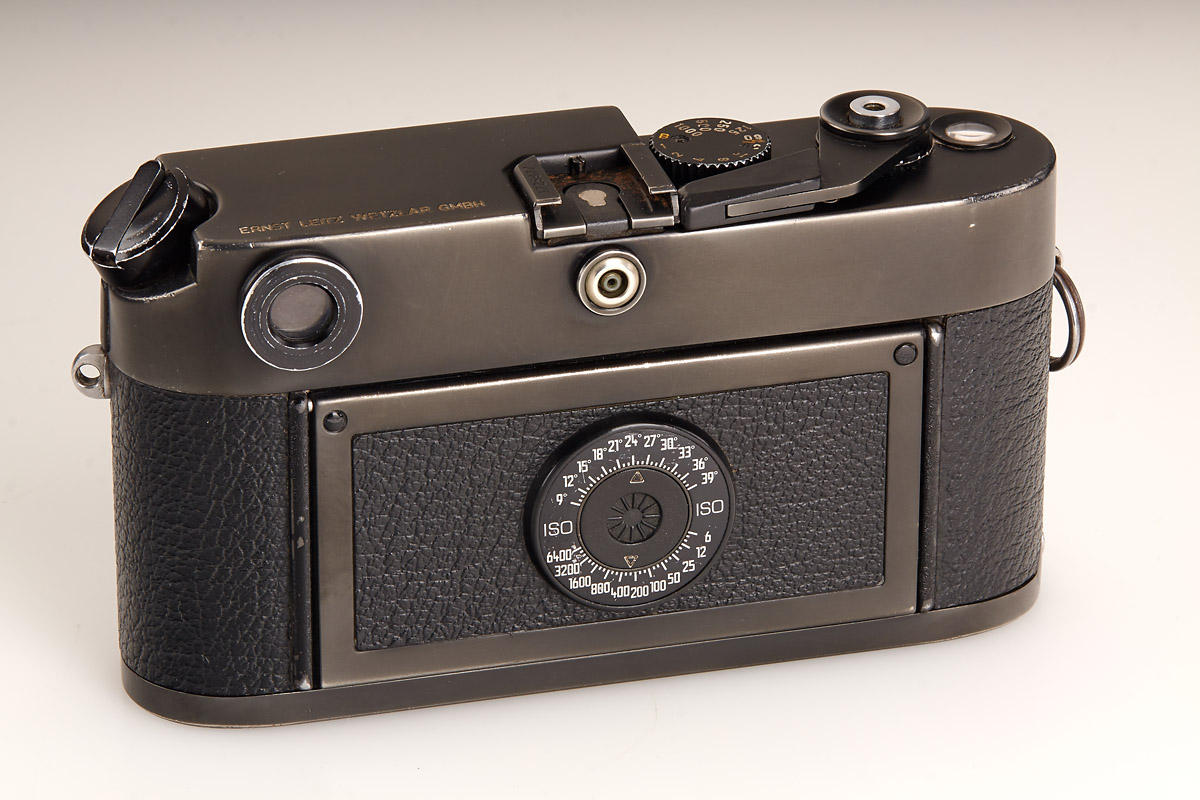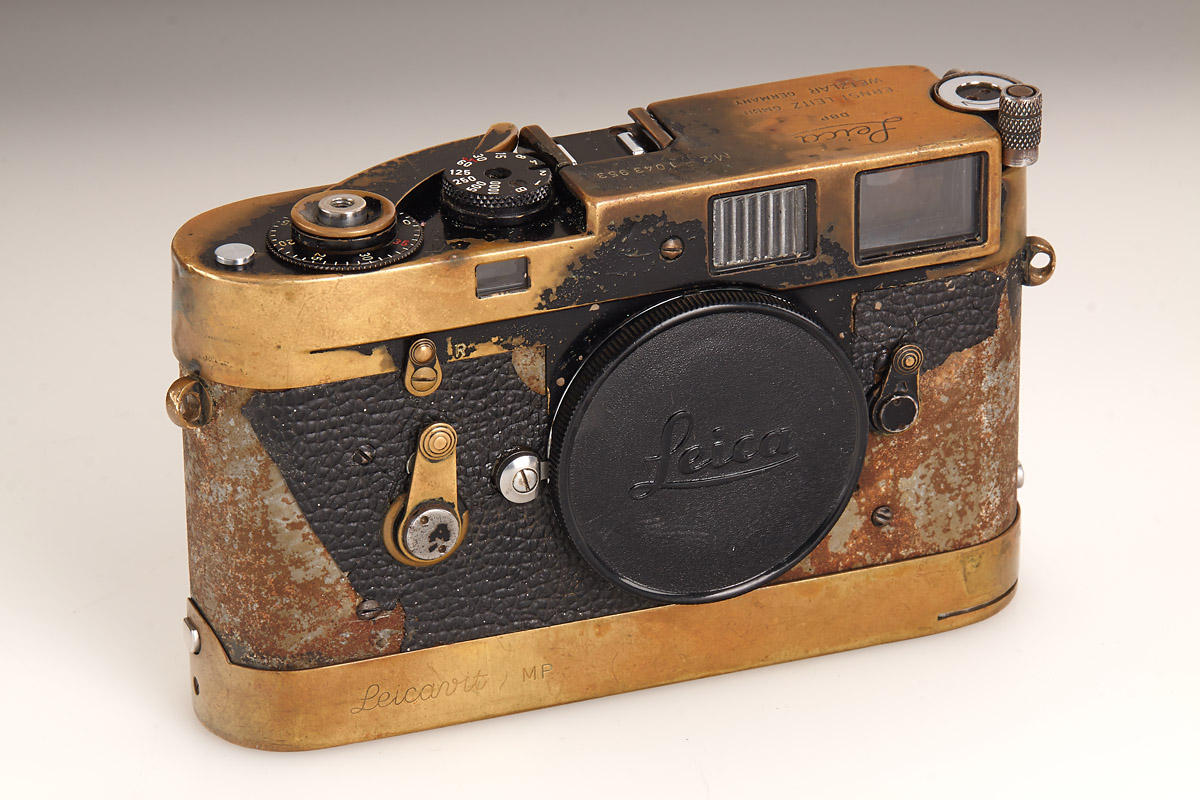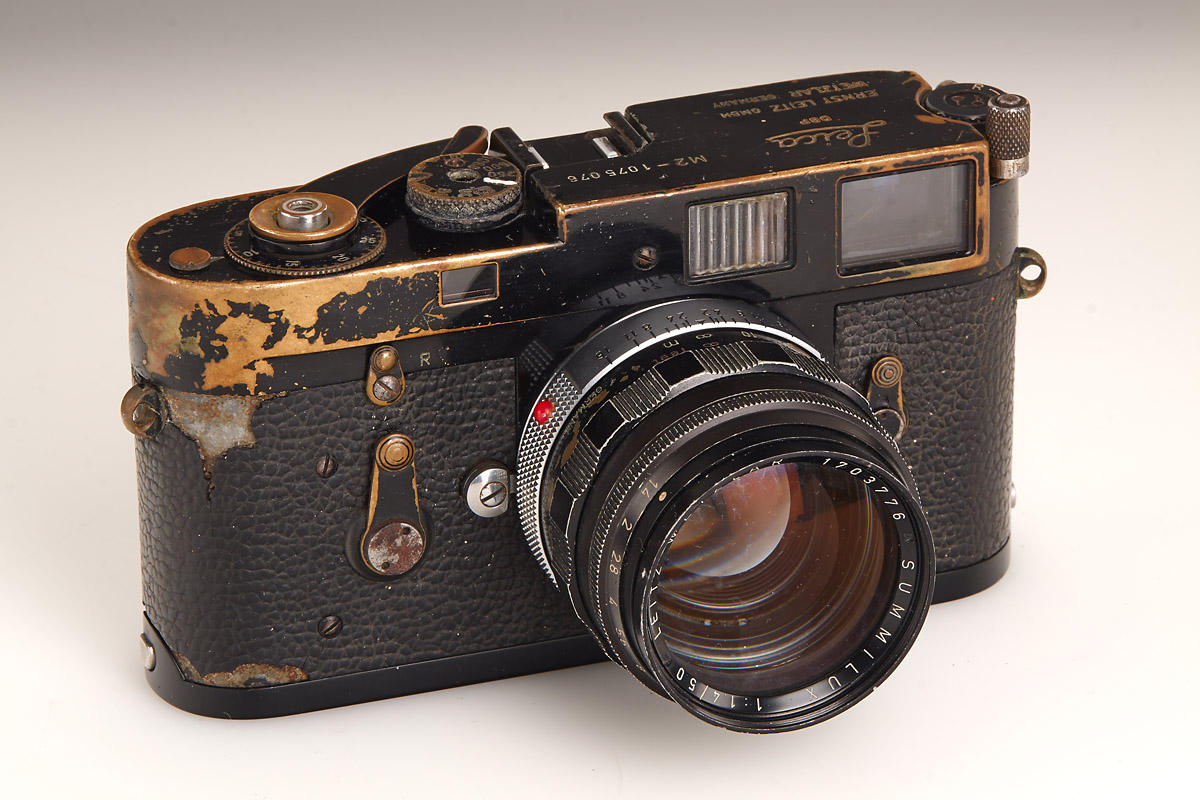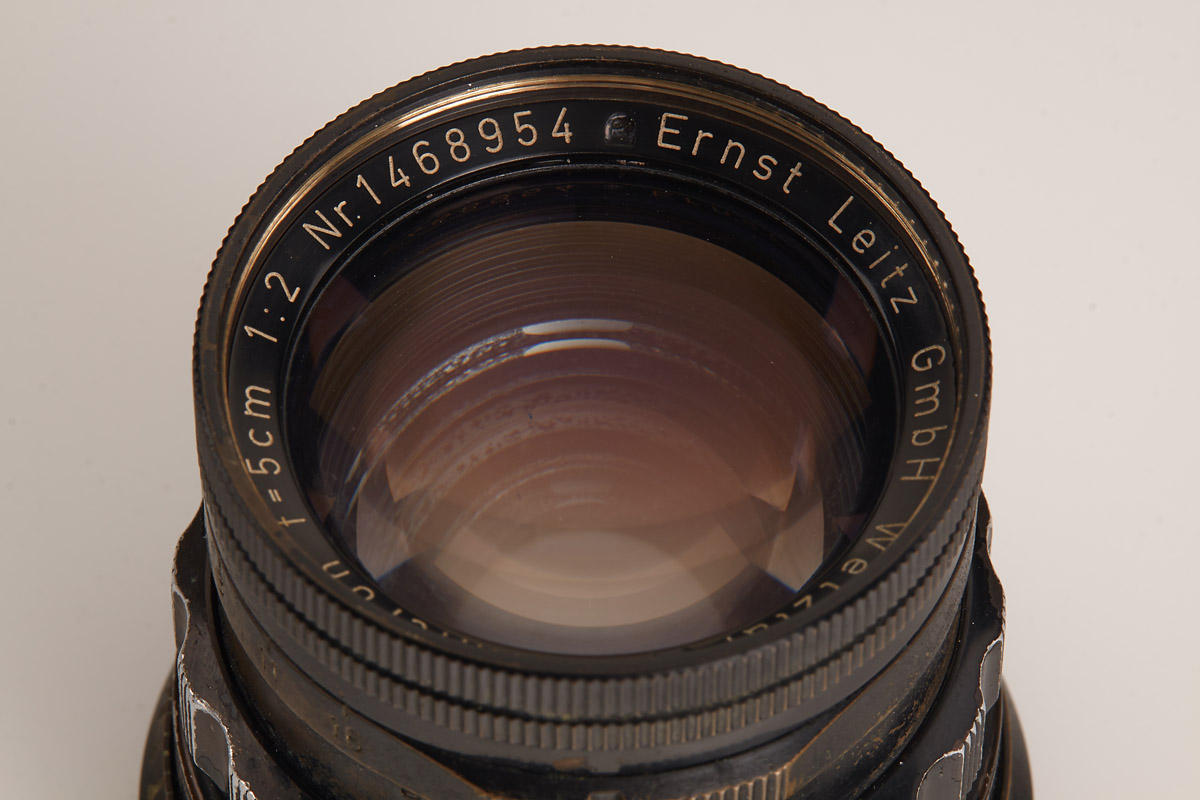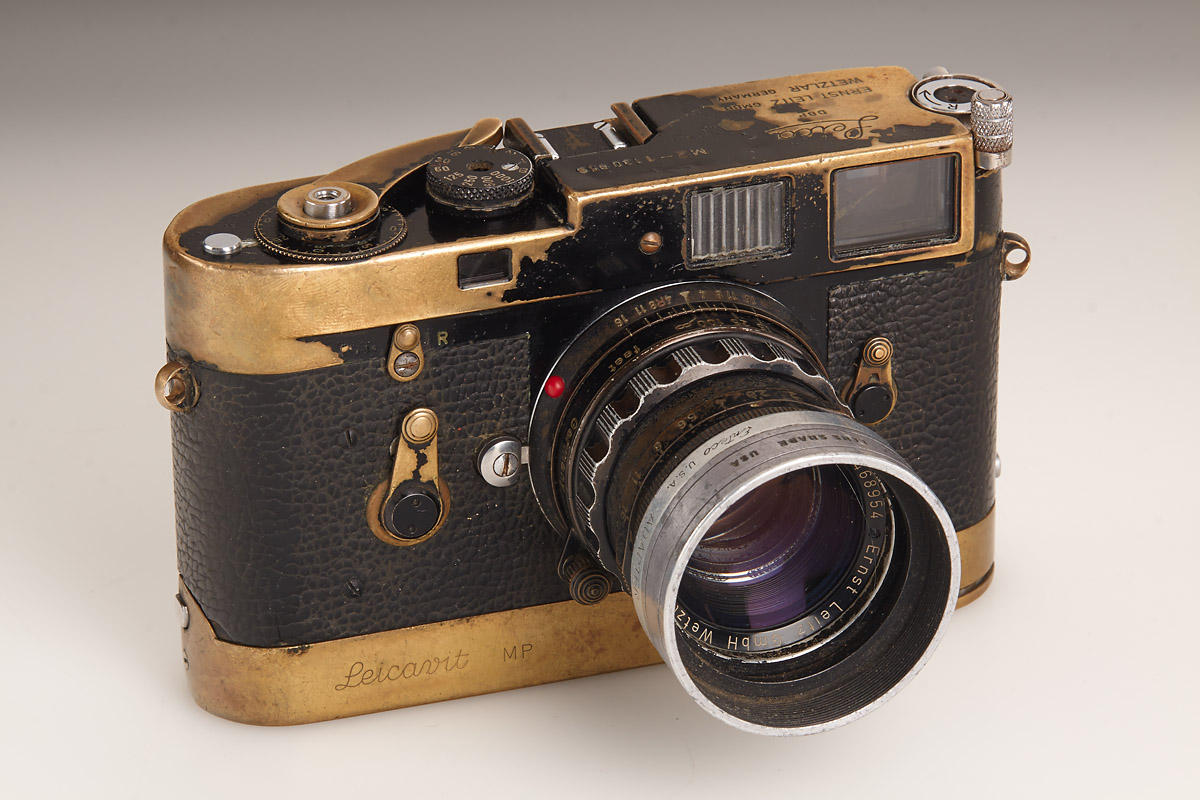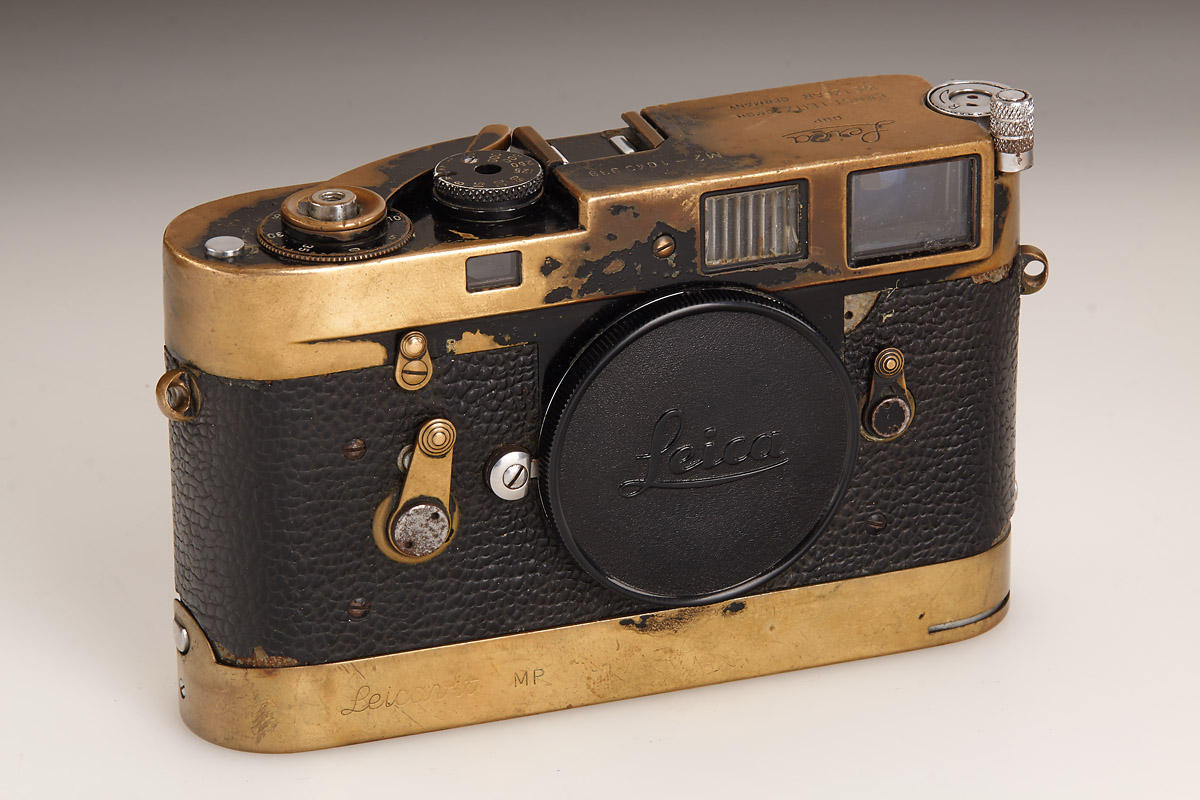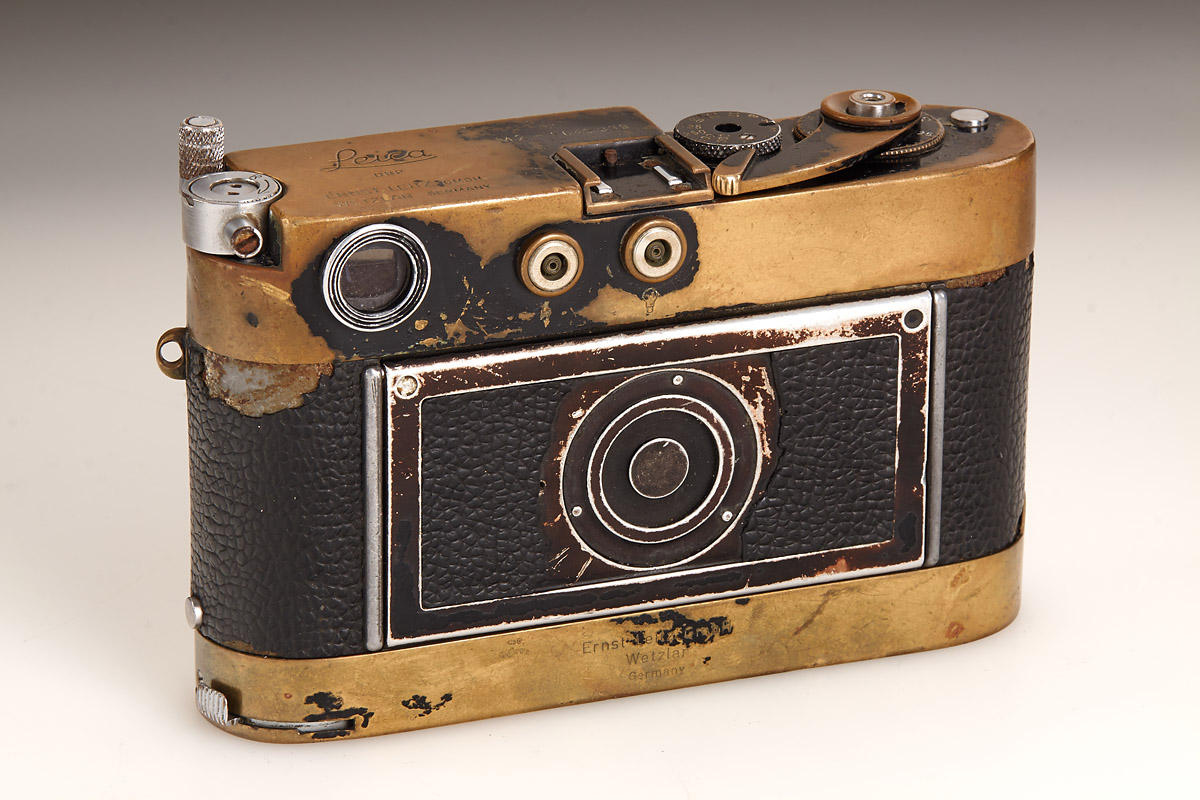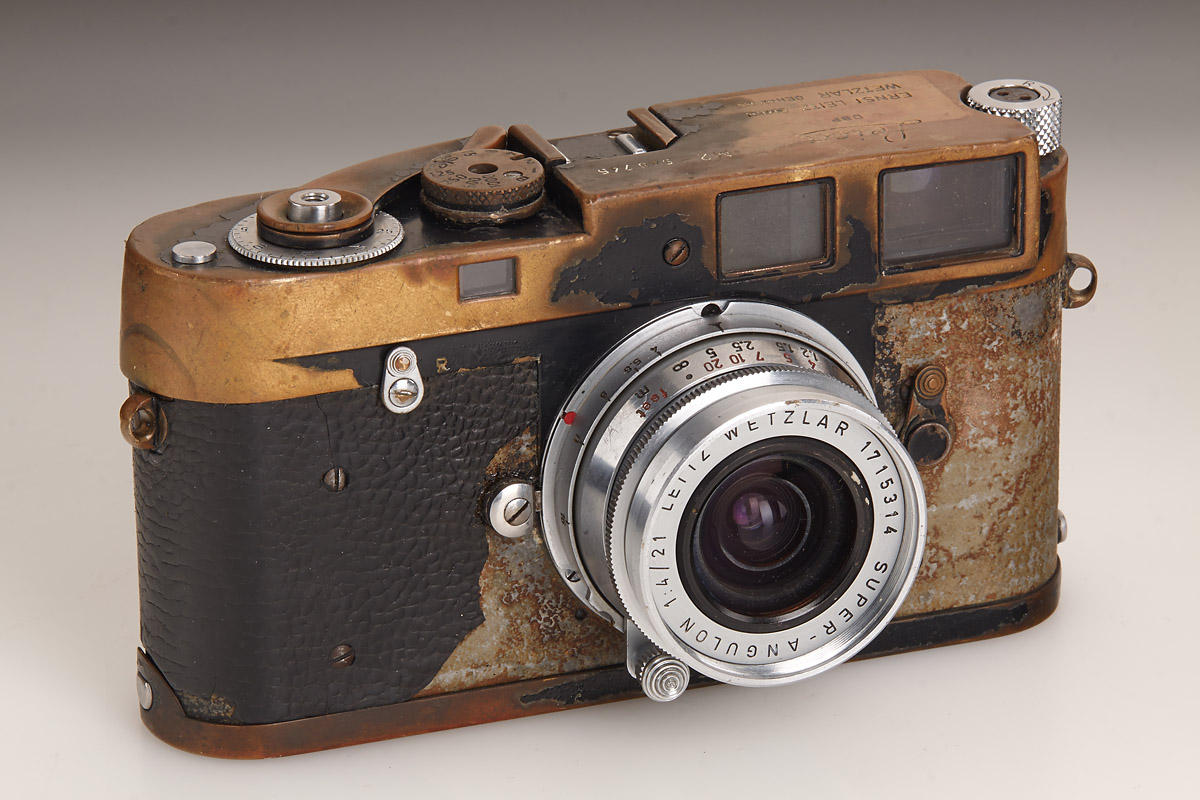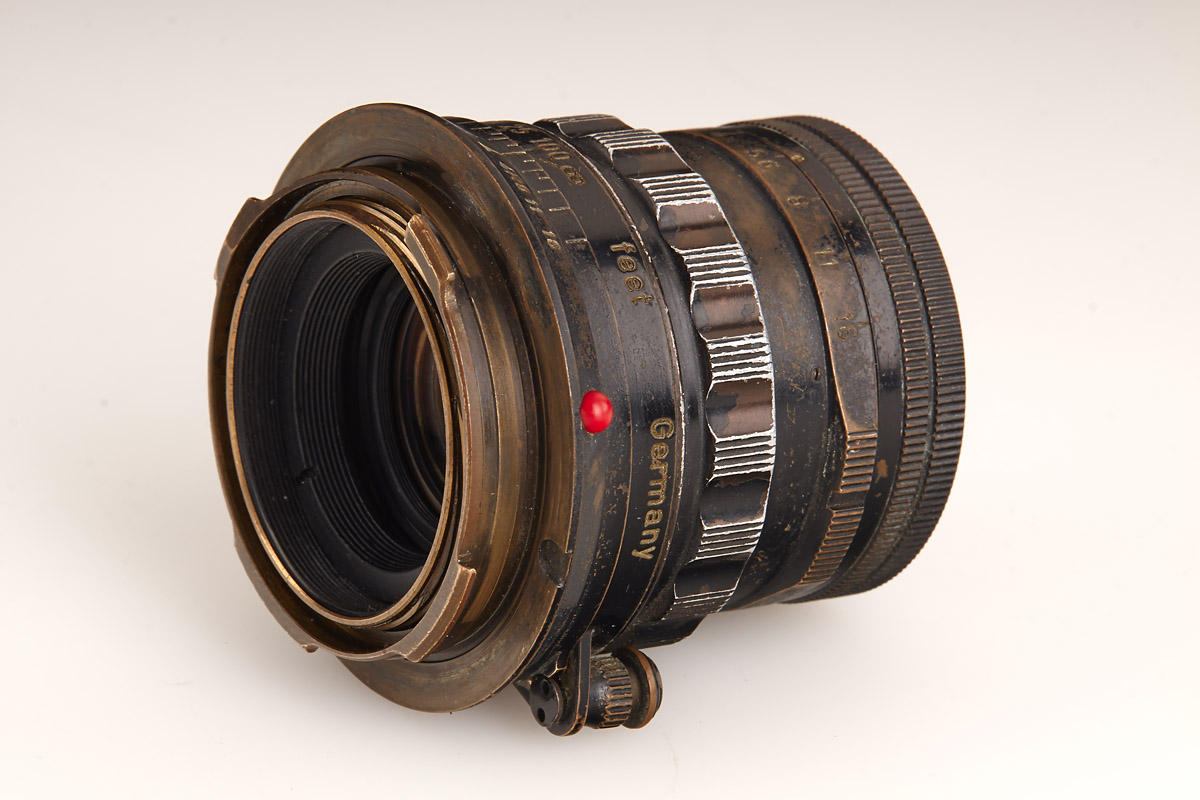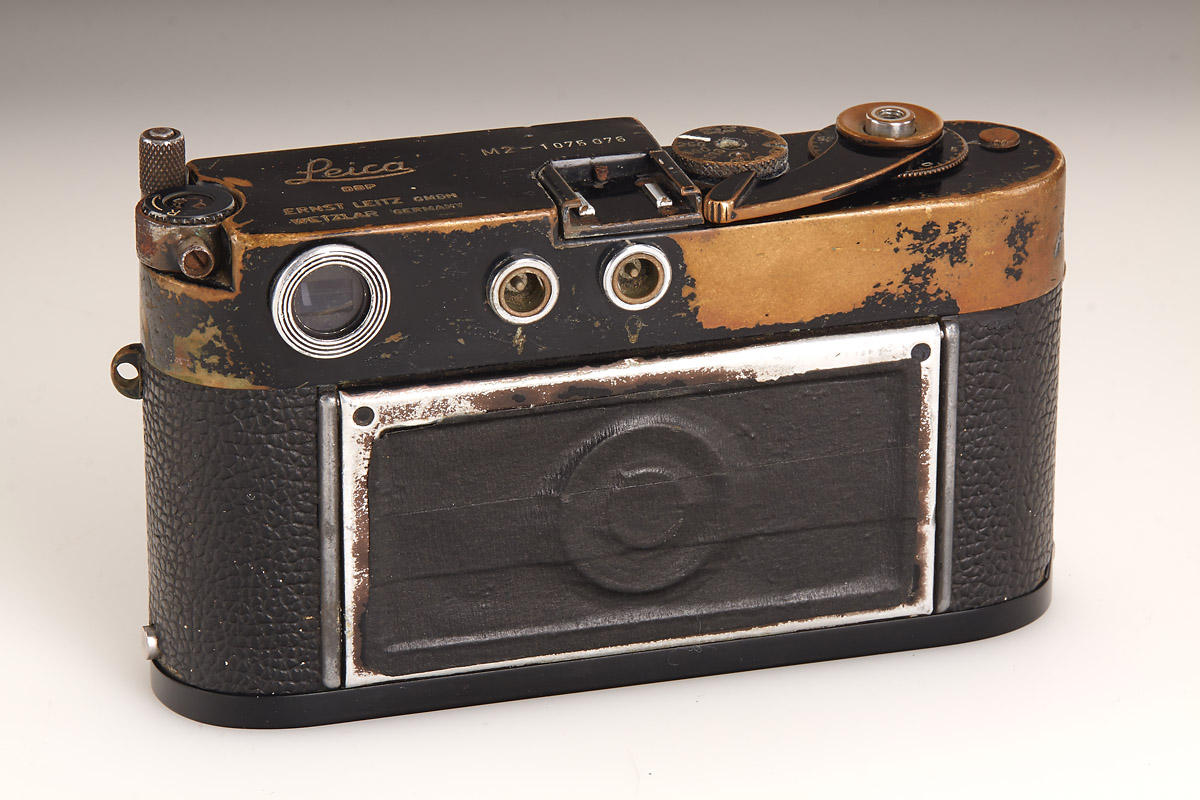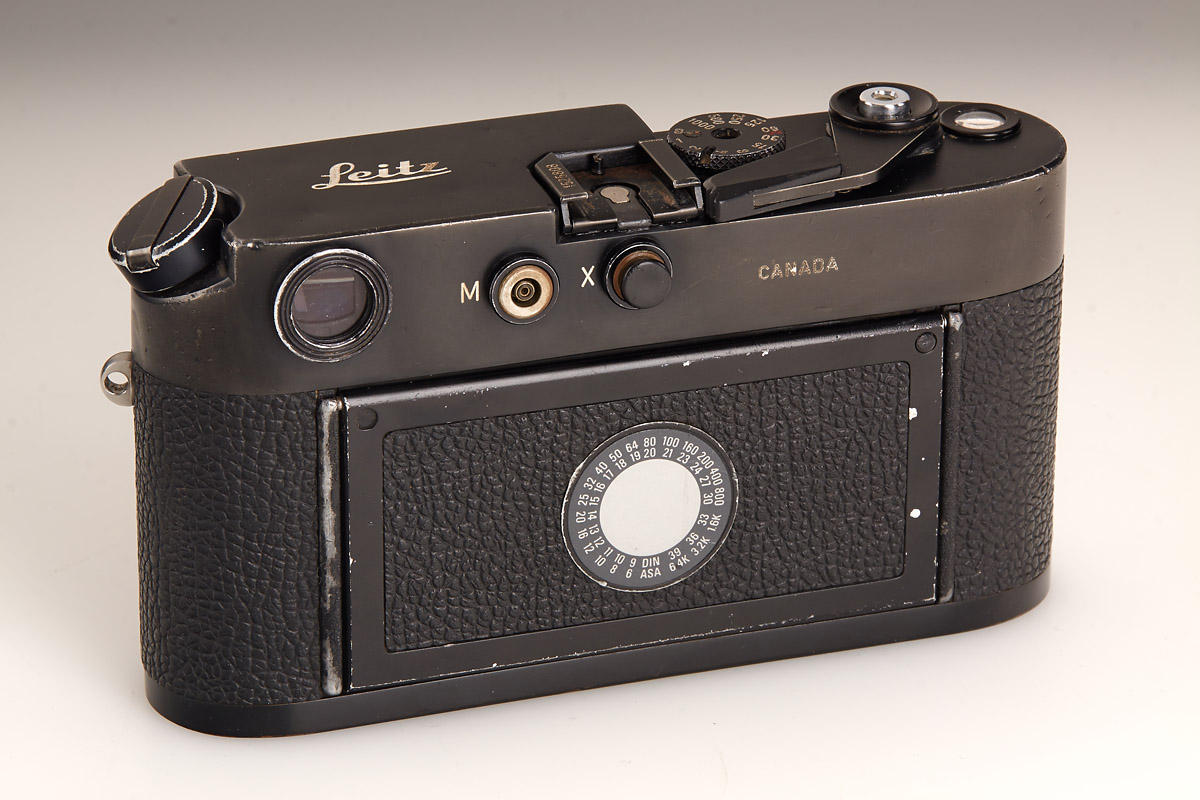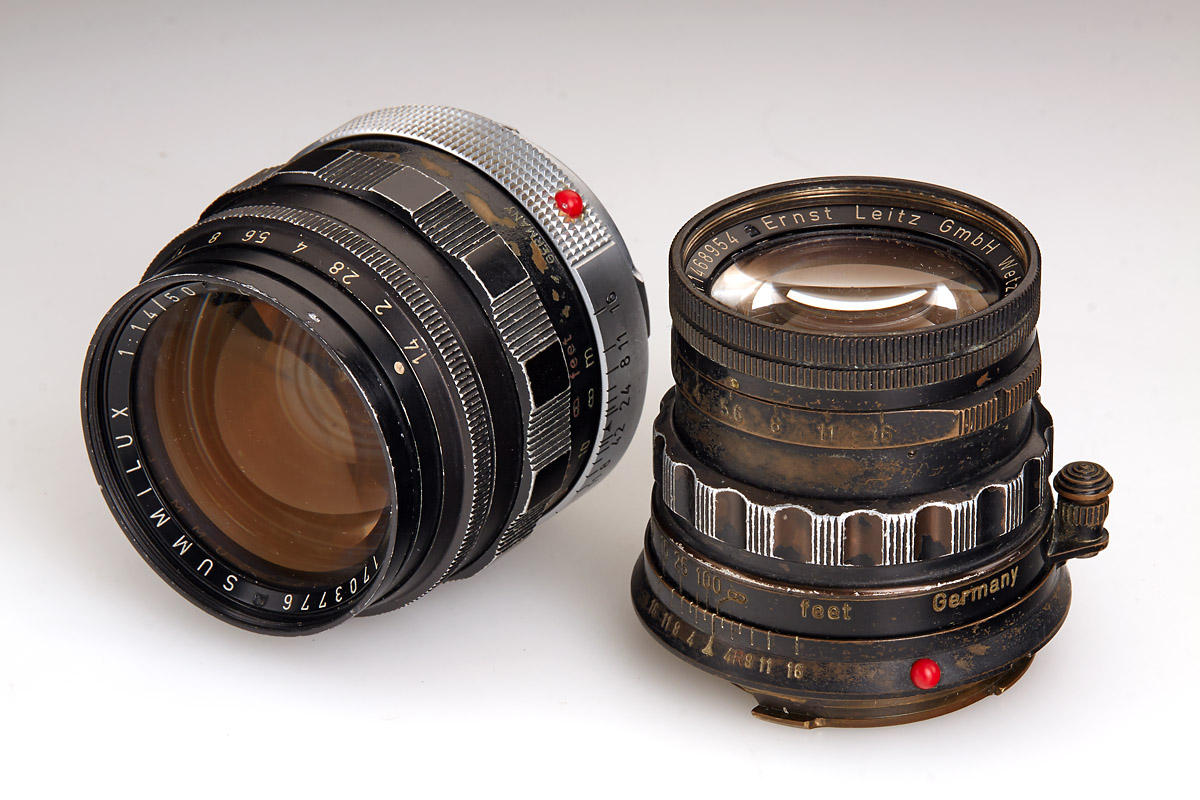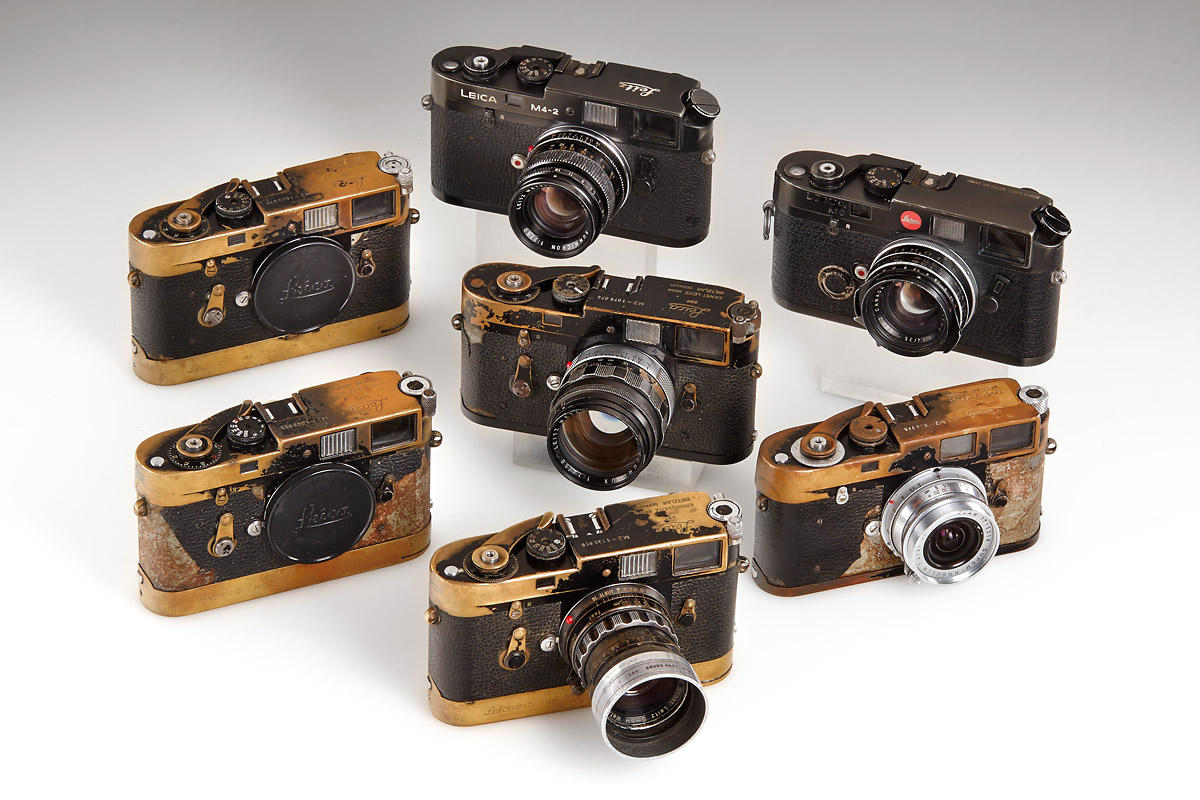
Leica M Collection ' Paul Fusco'
78
Hammer Price
€24,000
incl. Buyer's Premium
Estimate €40,000 – 50,000
Manufacture Year : 1958/87
Seven M cameras all owned and used by Magnum photographer Paul Fusco: (1) M2 black paint no. 948745 (very early camera from the first batch in 1958) with screw mount Super-Angulon 4/21mm no.1715314 (with M-adapter, cap) (2) M2 black paint no.1043939 (with selftimer, from a batch of 200 cameras from 1962), black paint Leicavit MP, typical crank on rewind knob (3) M2 black paint no.1043953 (with selftimer, from a batch of 200 cameras from 1962), black paint Leicavit MP, typical crank on rewind knob (4) M2 black paint no.1075076 (from a batch of 300 cameras from 1963), with rare black paint Summilux 1.4/50mm no.1703776 (with chrome rear part), typical crank on rewind knob (5) M2 black paint no.1130859 (from a batch of 300 cameras from 1965), black paint Leicavit MP, typical crank on rewind knob, very early black paint Summicron 2/5cm no.1468954 with black lens mount (special hood) (6) M4-2 no. 1525808 (1979) with Wetzlar Summicron 2/50mm no. 2535302 (hood) (7) M6 black Wetzlar no. 1725977 (1987) with Summilux 1.4/35mm no. 2167004 (1966, with stopper) All cameras are heavy used with great patina, very impressive they do give an impression how many photographs were taken with these cameras. Paul Fusco (born in Leominster, Massachusetts, 1930), a member of Magnum Photos since 1974, began his career photographing for the U.S. Signal Core during the Korean War. He studied photojournalism at Ohio University and his work has been widely published and exhibited, including exhibitions at the Photographers’ Gallery, London, and the International Festival of Photojournalism, Perpignan, France. As a staff photographer for Look magazine in 1968, Fusco was commissioned to document the events surrounding the funeral of Robert Kennedy. A uniquely profound record, "RFK Funeral Train" is a chronicle of the tragedy and trauma of Robert F. Kennedy's assassination. These emotional photographs, many never seen before, document the funeral procession as it traveled from New York City to Washington, D.C. in June 1968. In tribute to RFK's raw empathy, his determination to make our lives better, and his insistence that the government is answerable to all - black and white, rich and poor - hundreds of thousands of people stood patiently in the searing heat to pay their respects. An essay by Norman Mailer, remembering an encounter with RFK a month before the shooting, as well as a retelling of the events of that fateful week in June 1968 by Newsweek editor and RFK biographer Evan Thomas, joins a homage by Senator Edward M. Kennedy. Taken together, these writings and images viscerally evoke how the man and his vision of America touched us with unforgettable idealism and humanity. Paul Fusco (geb. 1930 in Leominster, Massachusetts), seit 1974 Mitglied von Magnum, fotografierte am Anfang seiner Karriere für die Fernmeldetruppe der U.S. Armee im Korea-Krieg. Er studierte Fotojournalismus an der Ohio University, und seine Arbeiten sind vielfach verbreitet und ausgestellt worden, zum Beispiel in Ausstellungen an der Photographer’s Gallery in London und beim Internationalen Festival des Fotojournalismus in Perpignan (Frankreich). Als Redaktionsfotograf des Magazins Look wurde Fusco 1968 beauftragt, die Ereignisse um das Begräbnis Robert Kennedys zu dokumentieren. Ein einzigartig profundes Werk: RFK Funeral Train verzeichnet die Tragödie und das Trauma von Robert F. Kennedys Ermordung. Diese emotionalen Fotografien, von denen viele noch nie zuvor gezeigt wurden, dokumentieren die Leichenprozession von New York City nach Washington DC im Juni 1968. Um RFK – seiner schieren Empathie, seiner Entschlossenheit, unser Leben zu verbessern, seinem Beharren darauf, dass die Regierung allen Rechenschaft schuldig ist, Schwarzen und Weißen, Reichen und Armen – die letzte Ehre zu erweisen, standen Hunderttausende von Menschen geduldig in der sengenden Hitze.
